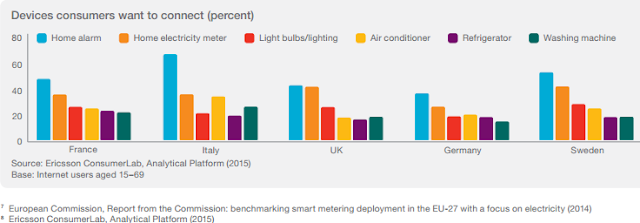 |
Western Europe is expected to become the second largest market globally for the Internet of Things (IoT) |
Around 25% of all IoT connections globally come from WesternEurope and this proportion is expected to grow in the region, with a CAGR of around 25 percent between 2016 and 2022. According to a recent report from Ericsson mobility Cellular will make up a smaller proportion of overall IoT connections, but will enjoy stronger growth between 2016 and 2022, with a CAGR of around 30 percent. The growth in both cellular and non-cellular IoT will be driven in three ways: government and European regulations, industry development .
Close to 200 million smart meters will be rolled out for electricity and 45 million for gas in the European Union by 2020.7 In the automotive industry, the regulatory push can be seen in the requirement for all new cars to be equipped with eCall from April 2018, which automatically dials Europe’s single emergency number in the event of a serious accident.
Finally, from a consumer perspective, IoT is beginning to move beyond entertainment and communications devices in western europe. Phones, laptops, TVs and games consoles are being connected to wearable devices. For example, 8 percent of Western Europeans own a smart watch, and a further 8% intend to buy one in the next 12 months.However interest is also high in connecting other house hold devices and appliances, to IOT as seen in the graph aboveThis interest directly links with the developments in the utility industry around smart meters and the control of energy consumption by customers.
Finally, from a consumer perspective, IoT is beginning to move beyond entertainment and communications devices in western europe. Phones, laptops, TVs and games consoles are being connected to wearable devices. For example, 8 percent of Western Europeans own a smart watch, and a further 8% intend to buy one in the next 12 months.However interest is also high in connecting other house hold devices and appliances, to IOT as seen in the graph aboveThis interest directly links with the developments in the utility industry around smart meters and the control of energy consumption by customers.
. |

No comments:
Post a Comment